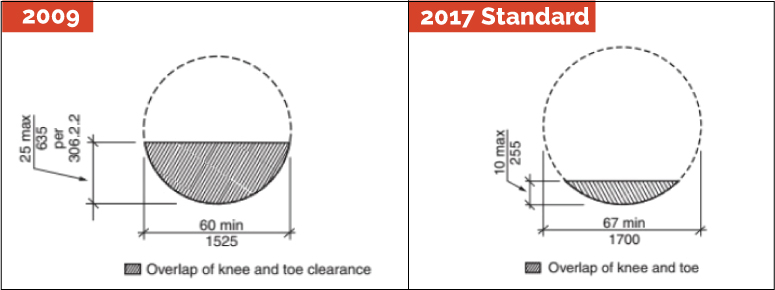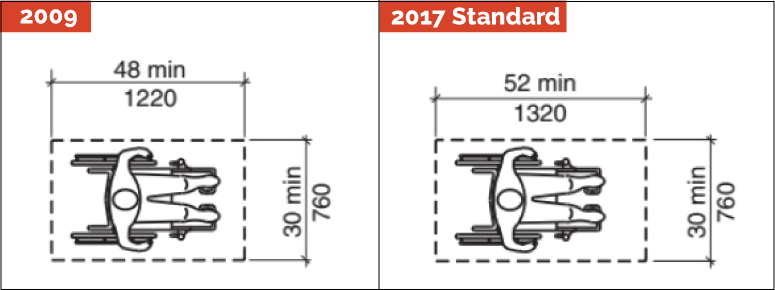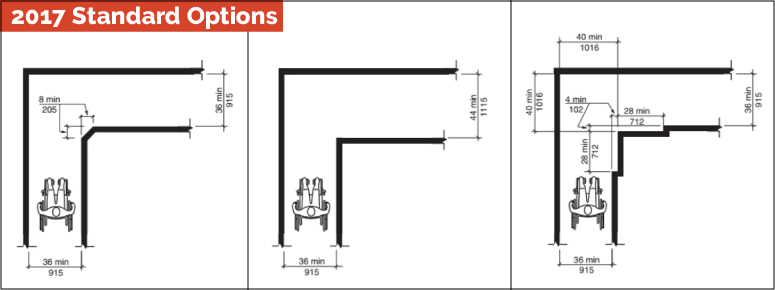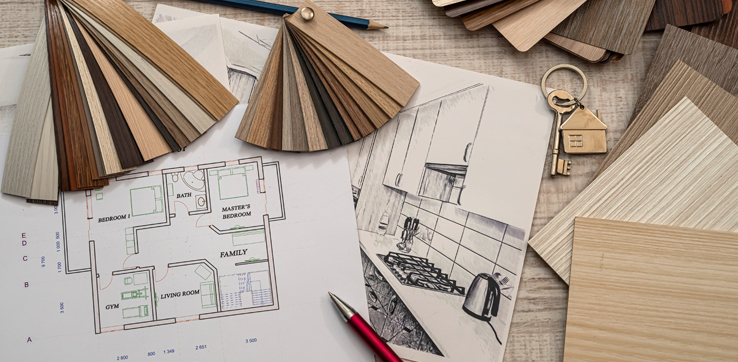Most people are familiar with the Americans with Disabilities Act when it comes to architectural design and accessibility. Did you know that there is another standard that is utilized for accessible design? Most code officials enforce the ICC A117.1, Accessible and Usable Buildings and Facilities Standard, which is published by the International Code Council. The International Building Code (IBC) provides direction on what elements need to be accessible, and it references this standard for direction on how to make those elements accessible.
There have been changes recently to the standard which is updated on a regular basis by a committee that is comprised of various professionals and organizations which represent individuals with disabilities such as Little People of America, US Access Board, Paralyzed Veterans of America and the National Association of the Deaf.
Codes Services Director Eirene Knott explains the recent changes and how it may impact design in this video. Additional detail related to the code is below.
Turning Radius
Most people are familiar with the 60-inch turning radius and the permitted overlap of knee and toe clearances. The 2017 standard will now require a 67-inch turning radius and will only permit a 10” overlap.

Clear Floor Space
This clear floor space is usually provided at elements such as drinking fountains, lavatories, service counters and other elements. The previous standard required a clear floor space of 30 inches in width for a depth of 48 inches. The clear floor space will now be 30 inches in width for a depth of 52 inches.

90-degree turn
The previous standard only provided direction on how to design for the clear width associated with a 180-degree turn. The new standard now provides direction on how to provide for 90-degree turns. Existing buildings will be permitted to provide for a 36-inch accessible route to turn into another 36-inch accessible route at 90-degrees. New buildings will have three options from which to choose for 90-degree turns.

The bottom line
Keep in mind that these changes will only be enforced within jurisdictions that adopt the 2021 IBC with no amendments to the accessible provisions within Chapter 11 of the 2021 IBC or the standards referenced in Chapter 35 of the IBC. Jurisdictions such as California, Florida and Texas which have their own accessibility code may not be including these changes. As always, check with the local jurisdiction to verify what they will enforce for accessibly compliance.
About the Author
Eirene Knott, MCP, CBO, CFM, has more than 20 years of experience working nationally with building and fire codes. She has written and presented code changes to clarify language in the code, as well as provided testimony on other proposed code changes. Prior to joining BRR, Eirene served as a Building Official, a Senior Plans Analyst and a Building Inspector. She has taught several codes-related courses at various conferences and the National Fire Academy. Email her.



